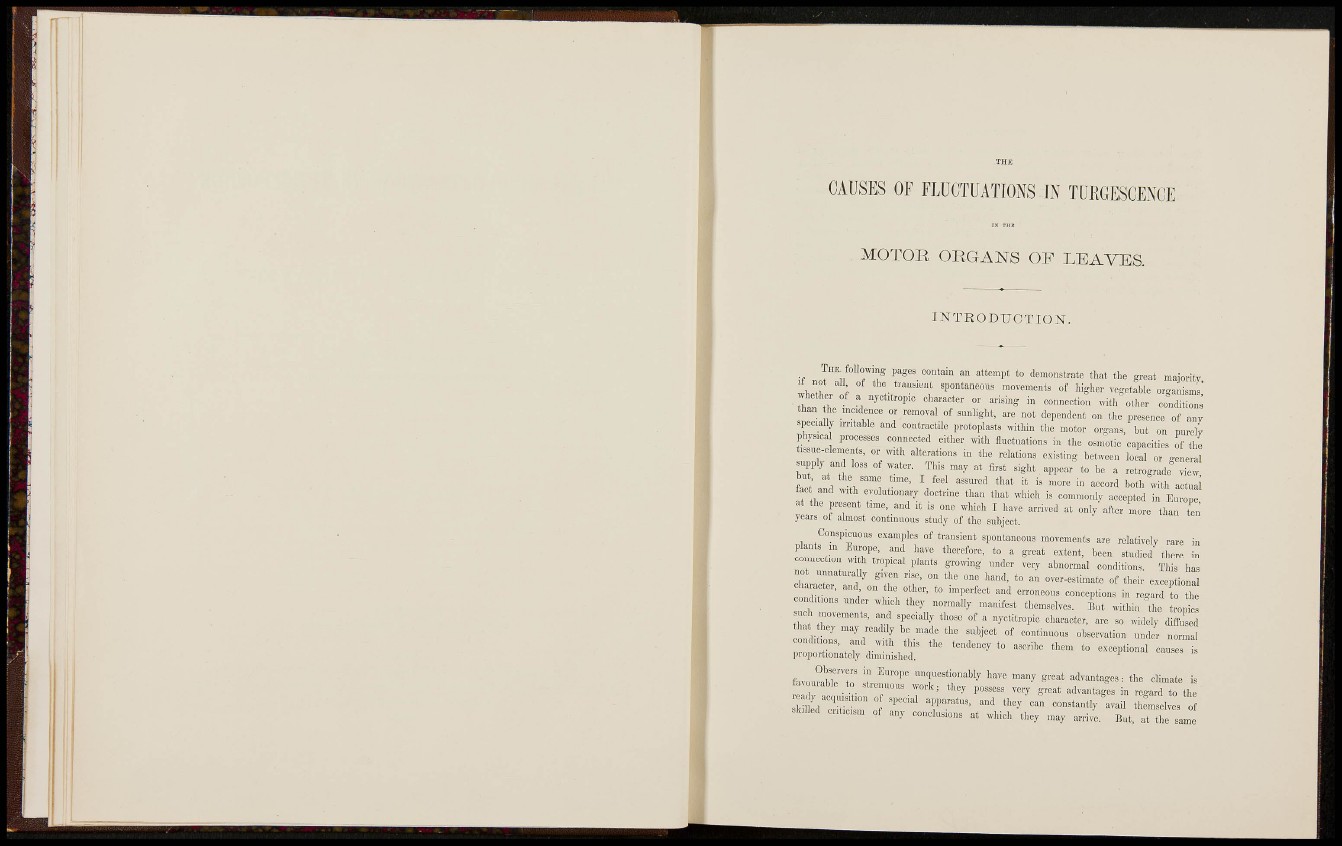
CAUSES OF FLUCTUATIONS IN TURGESCENCE
MOTOR ORGANS OF LEAVES.
I N T R O D U C T I O N .
If „ P^ges contain an attempt to demonstrate that the great majoritv
A e t h e r ' f f VnUneau. movements of higher vegetable organism ,
than he merdenoe or removal of sttnlight, ar-e not dependent on the presenee of any
spec,any rrntable and contractile protoplarts within the motor o r g a n s / b u t on nru-elv
physica processes connected either with flnctnations in the osmotic capacities of t i l
tissn -Clements, or wrth alterations m the relations c.xisting between local or .-cncral
snpply an loss of water. This may at first sight appear to be a retrograde" ™w
tac and with c-olntionary doctrme than that which is commonly acceptcd in Europe
the present trme and it ts one which I have arrived at only'after more t h t t'n
years of almost contmnons study of the subject.
Conspicuous examples of transient spontaneous movements are relatively rare in
plants .n Europe, and have therefore, to a great extent, been studied ther n
r ™ » -iirh
not nnnatura ly given use, on the one hand, to an over-estimate of their exceptional
haraetcr. and on the other, to imperfect and erroneous conceptions in rcga H th
coniUons under wheh they normaUy manifest themselves, i u t within the opic
sn h movements, and spec,ally those of a nyctitropic character, are so widely diffused
that hey may readily be made the subject of continuous observation under normal
proportionately diminished. - c e p t l o n a l L u s e r
f a v o u ? a i r r »"»y advantages, the climate is
Iv a iii • • very great advantages in regard to the
2 d c i ^ r " 1 ' ' -ail themselves of
skilled criticism of any conclusions at whicli they may arrive. But. at the same